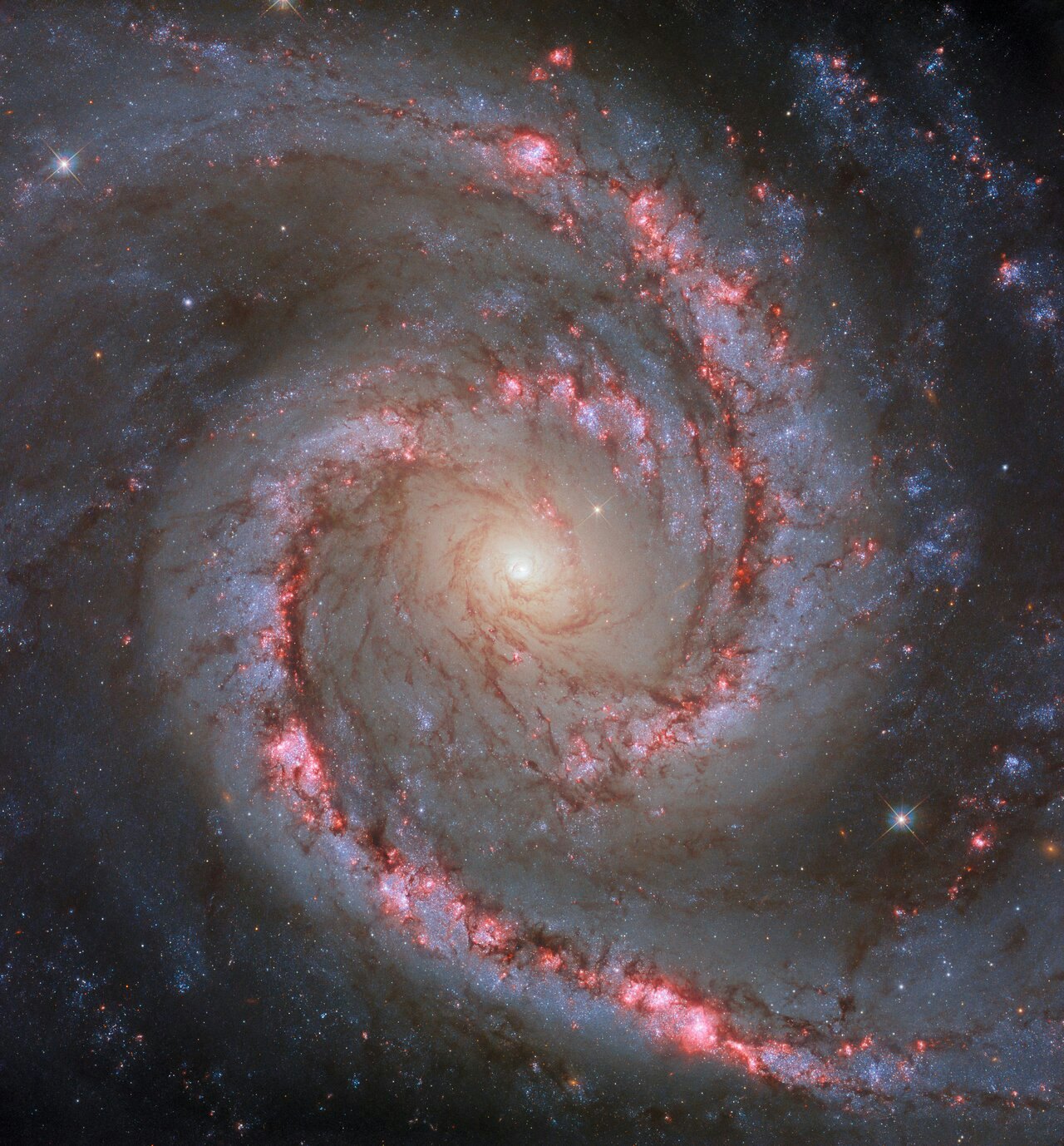
The Hubble Space Telescope captured an image of a beautiful galaxy from a puzzling place.
The galaxy, NGC 1566, revealed its broad pinwheel arms and its pancake-like disk of stars and gas to the 33-year-old telescope. Since it is oriented on its side, at least from our perspective on Earth, Hubble could obtain a grand birds-eye view of the galaxy. The scene is clear and dazzling, but something else about it is murky: Astronomers are still figuring out what to make of NGC 1566’s home in space.
The observatory is run by the European Space Agency (ESA) and NASA. According to the ESA, this galaxy is located about 60 million light-years from Earth, in the constellation Dorado, the Spanish word for a Mahi Mahi fish.
How big is the galaxy’s home?
This aquatic celestial drawing also lends its name to a collection of galaxies that includes NGC 1566. Just like stars, galaxies huddle together, too. Sometimes, hundreds of galaxies convene and stay bound to one another by their collective gravity. These are known as clusters. But when galaxies form more intimate gatherings, there can be as few as tens of galaxies. These are called groups.
NGC 1566 is part of a smaller set called the Dorado group. But, according to ESA, scientists don’t yet know how many galaxies call it home. Knowing how galaxies interact and organize with each other can reveal a lot about the evolution of the universe. But astronomers are still determining which galaxies belong to the Dorado group and which seem to be near its members but are actually much farther away.
“As an example of why it is so challenging for astronomers to pin down members of groups such as the Dorado group, we can imagine a photograph of an adult human and a large oak tree,” ESA officials wrote in the description. If both are the same size, the viewer surmises that the person is much closer than the tree, they explain. But in order to know that it's a trick of perception (and that the person is not, in fact, a giant), the viewer must already know the usual size of the person and the oak tree.
“When working out members of a galaxy group, astronomers are not necessarily equipped with the knowledge of the size of the individual galaxies,” ESA officials add. “This has become easier with more sophisticated observation techniques, but still sometimes presents a challenge.”
For now, it’s satisfying enough that NGC 1566 is such a spectacular sight.







